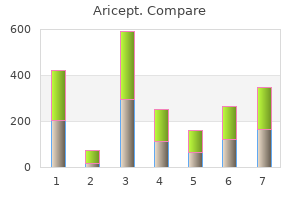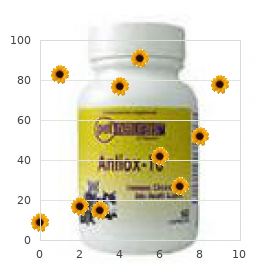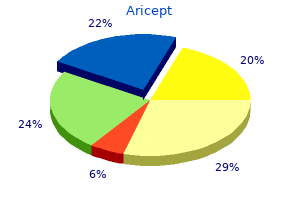

 5100 Springfield St. Suite 108, Dayton, Ohio 45431-1274
5100 Springfield St. Suite 108, Dayton, Ohio 45431-1274Aricept
"Buy aricept 10 mg on line, symptoms dengue fever".
By: Z. Sibur-Narad, M.B.A., M.D.
Assistant Professor, Western Michigan University Homer Stryker M.D. School of Medicine
If adequate help in the home is not available residential care becomes a necessity medicine for the people aricept 10 mg sale. The burden on the caregiver is thought to be a major factor in the decision to make long-term care placement symptoms gluten intolerance purchase aricept master card. Long-term care facilities vary widely in their ability to provide specialized services for people with dementia medications zofran buy 5 mg aricept. Ideally the components of long-term care would be tailored to an individual patient and include structured cognitive and recreational activities along with self-care assistance. Generally it is unwise to select a facility that is unlicensed since there is no oversight of services provided. If there is no underlying urological problem, incontinence may be improved by a behavioural strategy involving scheduled toileting or prompted voiding,135 and medications can be used at night. Techniques for communication with dementia patients are another important facet of non-pharmacologic therapy, especially in the later stages of the illness. The caregiver can improve communication by using simple sentences but talking slowly is not reported to improve communication. If new behavioural disturbances arise, consider the possibility of physical illnesses like an infection or metabolic problem, discomfort, or injury, and drug side-effects. The development of an acute or subacute behavioural disturbance with inattention signifies delirium. Although care providers generally have positive feeling about their role, they may become isolated and depressed. Many patients will still have the ability to make decisions or the capacity to participate actively in this process. Most patients will resist any change that threatens their independence and some may lack insight about the necessity to make life-style changes. It is advantageous to provide a written summary of what is covered during the meeting to the patient and their family. Driving and medication management should be reviewed with all newly diagnosed patients. Discussing loss of driving privileges may generate conflict and when individuals with dementia should stop driving is a very controversial issue. During the moderate stage of the illness it is no longer safe for the patient to live alone. Driving performance evaluations may not adequately address navigational skills, direction sense, or intact processing of visuospatial information. Many care providers erroneously believe that they could prevent an accident from occurring if they ride in the car with the patient. Amnestic deficits lead to a dangerous situation where too much of a medication or too little may be ingested. Solutions to this problem may be as simple as a having the spouse oversee that medication is dispensed properly or a medication manager should be designated. Those without a live-in caregiver may use an automatic monitored medication dispenser or have a friend or relative drop by to dispense the medication. Social circumstances including financial resources and the presence of a capable care provider also affect the ability to make necessary changes in life-style to ensure safety.
Tipping of vaporizers can cause liquid anesthetic to spill from the vaporizing chamber into the bypass chamber medications for fibromyalgia cost of aricept, with a resultant increased vapor concentration exiting from the vaporizer medications restless leg syndrome cheap aricept 5mg otc. Nevertheless symptoms torn meniscus purchase aricept no prescription, the likelihood of tipping is minimized because vaporizers are secured to the anesthesia machine and there is little need to move them. Commonly, two to three anesthetic-specific vaporizers are present on the anesthesia machine. A safety interlock mechanism ensures that only one vaporizer at a time can be turned on. Turning on a vaporizer requires depression of a release button on the concentration dial, followed by counterclockwise rotation of the dial. The location of the filler port on the lower portion of the vaporizer minimizes the likelihood of overfilling of the vaporizing chamber (>125 mL) with liquid anesthetic. A window near the filler port permits visual verification of the level of liquid anesthetic in the vaporizing chamber. Use of an anesthetic-specific keyed filler device prevents placement of a liquid anesthetic into the vaporizing chamber that is different from the anesthetic for which the vaporizer was calibrated. This is uniquely important for desflurane because its vapor pressure is near 1 atm and accidental placement of desflurane in a contemporary vaporizer could result in an anesthetic overdose. Anesthetic breathing systems can add considerable resistance to inhalation because peak flows as high as 60 L/min are reached during spontaneous inspiration. Right-angle connectors should be replaced with curved connectors to minimize resistance. Anesthetic breathing systems are classified as open, semiopen, semiclosed, and closed according to the presence or absence of (1) a gas reservoir bag in the circuit, (2) rebreathing of exhaled gases, (3) means to chemically neutralize exhaled carbon dioxide, and (4) unidirectional valves (Table 15. The most commonly used anesthetic breathing systems are the (1) Mapleson F (Jackson-Rees) system, (2) Bain circuit, and (3) circle system. The fresh gas flow should be adjusted when changing from spontaneous and controlled ventilation. The performance of these circuits is best understood by studying the gas disposition at end exhalation during spontaneous and controlled ventilation. Flow Characteristics Mapleson Breathing Systems In 1954, Mapleson analyzed and described five different arrangements of fresh gas inflow tubing, reservoir tubing, face mask, reservoir bag, and an expiratory valve to administer anesthetic gases. The Mapleson F system, which is a Jackson-Rees modification of the Mapleson D system, was added later. Because of no clear separation of inspired and expired gases, rebreathing occurs when inspiratory flow exceeds the fresh gas flow. The composition of the inspired mixture depends on how much rebreathing takes place. The 226 During spontaneous ventilation, exhaled gases pass down the expiratory limb and mix with fresh gases. With the next inspiration, the inhaled gas mixture comes from the fresh gas flow and from the expiratory limb, including the reservoir bag. Clinical Uses the Mapleson F system is commonly used for controlled ventilation during transport of tracheally intubated patients. Prevention of rebreathing during spontaneous ventilation requires a fresh gas flow of 200 to 300 mL/kg/min and a flow of only 70 mL/kg/min during controlled ventilation. The Mapleson F system may be used for both spontaneous and controlled ventilation. It is inexpensive, can be used with a face mask or endotracheal tube, is lightweight, and can be repositioned easily.
Aricept 10 mg for sale. Withdrawing from herion. Day 1.

This technique relies entirely upon intravenous drugs for the provision of general anesthesia medications bipolar disorder order aricept with american express. Most commonly medications or drugs cheap aricept 10mg on line, continuous infusions of remifentanil or alfentanil are combined with a propofol infusion medicine wheel colors purchase cheap aricept. As the immunosuppressive effects of opioids (particularly morphine) and their impact on angiogenesis have been demonstrated in animal and in vitro studies, concern over the influence of these drugs on cancer recurrence and survival has emerged. Some early retrospective data comparing cancer recurrence rates in patients receiving standard postoperative opioid analgesia with those receiving alternative techniques. A retrospective review of more than 34,000 breast cancer patients from 1996 to 2008 demonstrated no association between opioid therapy and cancer recurrence. What pharmacokinetic parameter is most suitable for describing the offset time of a continuous opioid infusion What are the effects of opioids on minute ventilation and ventilatory response to carbon dioxide A patient with postoperative respiratory depression from morphine is given intravenous naloxone. What key questions should be addressed when selecting an opioid for intraoperative use Opioid Abuse Epidemic Deaths related to the abuse and diversion of prescription opioids have skyrocketed in the United States and elsewhere (also see Chapter 44). Molecular biology of the opioid receptors: structures, functions and distributions. Identification and characterization of six new alternatively spliced variants of the human mu opioid receptor gene. Functional magnetic resonance imaging measures of the effects of morphine on central nervous system circuitry in opioid-naive healthy volunteers. Loss of morphine-induced analgesia, reward effect and withdrawal symptoms in mice lacking the mu-opioid-receptor gene. Opiate receptor knockout mice define mu receptor roles in endogenous nociceptive responses and morphine-induced analgesia. Anesthetic potency and influence of morphine and sevoflurane on respiration in mu-opioid receptor knockout mice. Pharmacokinetic modeling to predict morphine and morphine-6-glucuronide plasma concentrations in healthy young volunteers. The transfer half-life of morphine6-glucuronide from plasma to effect site assessed by pupil size measurement in healthy volunteers. Electroencephalographic quantitation of opioid effect: comparative pharmacodynamics of fentanyl and sufentanil. Context-sensitive half-time in multicompartment pharmacokinetic models for intravenous anesthetic drugs [see comments]. Comparison of morphine-6-glucuronide and morphine on respiratory depressant and antinociceptive responses in wild type and mu-opioid receptor deficient mice. Vagal bradycardia produced by microinjections of morphine-like drugs into the nucleus ambiguus in anaesthetized dogs. Central vagal control of fentanyl-induced bradycardia during halothane anesthesia. Difficult or impossible ventilation after sufentanil-induced anesthesia is caused primarily by vocal cord closure. Inhibition of urinary bladder contractions by a spinal action of morphine and other opioids.


What intraoperative factors may have an influence on neurocognitive outcomes in a child receiving general anesthesia Temperature Temperature maintenance during anesthesia is one of the challenges of pediatric anesthesia (also see Chapters 20 and 34) treatment hpv purchase aricept american express. Perioperative neurotoxicity in the elderly: summary of the 4th International Workshop medications safe during pregnancy 5 mg aricept otc. General anaesthesia: from molecular targets to neuronal pathways of sleep and arousal medications diabetic neuropathy purchase discount aricept on-line. Behavioral consequences in rats from chronic exposure to 10 ppm halothane during early development. Early exposure to common anesthetic agents causes widespread neurodegeneration in the developing rat brain and persistent learning deficits. General anesthesia causes longterm impairment of mitochondrial morphogenesis and synaptic transmission in developing rat brain. Early exposure to general anesthesia disturbs mitochondrial fission and fusion in the developing rat brain. Inhibition of p75 neurotrophin receptor attenuates isoflurane-mediated neuronal apoptosis in the neonatal central nervous system. General anesthesia: a gateway to modulate synapse formation and neural plasticity Webbased method for translating neurodevelopment from laboratory species to humans. Isoflurane-induced apoptosis of neurons and oligodendrocytes in the fetal rhesus macaque brain. Ketamine anesthesia during the first week of life can cause long-lasting cognitive deficits in rhesus monkeys. Anesthetics rapidly promote synaptogenesis during a critical period of brain development. Volatile anesthetics rapidly increase dendritic spine density in the rat medial prefrontal cortex during synaptogenesis. Long-term effects of single or multiple neonatal sevoflurane exposures on rat hippocampal ultrastructure. The abolishment of anesthesia-induced cognitive impairment by timely protection of mitochondria in the developing rat brain: the importance of free oxygen radicals and mitochondrial integrity. Mitochondrial protectant pramipexole prevents sex-specific long-term cognitive impairment from early anaesthesia exposure in rats. Isoflurane differentially affects neurogenesis and long-term neurocognitive function in 60-day-old and 7-day-old rats. Clinically relevant concentrations of propofol but not midazolam alter in vitro dendritic development of isolated gamma-aminobutyric acidpositive interneurons. Repeated exposure to ketamine-xylazine during early development impairs motor learning-dependent dendritic spine plasticity in adulthood. Isoflurane impairs the capacity of astrocytes to support neuronal development in a mouse dissociated coculture model. General anesthetics induce apoptotic neurodegeneration in the neonatal rat spinal cord. Effects of intrathecal ketamine in the neonatal rat: evaluation of apoptosis and long-term functional outcome. Validation of a preclinical spinal safety model: effects of intrathecal morphine in the neonatal rat.